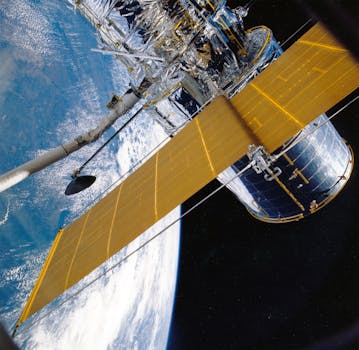
Beyond Earth: How Recent Advances Are Shaping Satellite Telecommunications
Introduction to Satellite Telecommunications
Satellite telecommunications is a rapidly evolving field that has transformed the way we communicate beyond Earth’s surface. With the increasing demand for global connectivity, satellite telecommunications has become a vital component of modern communication systems. Recent advances in technology have enabled the development of more efficient, cost-effective, and reliable satellite communication systems. In this article, we will explore the recent advances in satellite telecommunications and their impact on the industry.
Satellite telecommunications involves the use of satellites in orbit around the Earth to transmit and receive data, voice, and video signals. The first commercial satellite, Intelsat 1, was launched in 1965, and since then, the industry has experienced significant growth and advancements. Today, satellite telecommunications play a critical role in global communication, providing connectivity to remote and underserved areas, supporting emergency communications, and enabling global navigation systems.
Recent Advances in Satellite Telecommunications
Recent advances in satellite telecommunications have been driven by technological innovations, improvements in manufacturing processes, and the increasing demand for global connectivity. Some of the key recent advances include the development of high-throughput satellites (HTS), the use of advanced propulsion systems, and the implementation of software-defined satellites. High-throughput satellites have enabled faster data transfer rates, making it possible to support a wide range of applications, including broadband internet, video streaming, and mobile connectivity.
The use of advanced propulsion systems, such as electric propulsion, has improved the efficiency and cost-effectiveness of satellite launches. Electric propulsion systems use electrical energy to accelerate ions or xenon gas, generating a high-specific-impulse thrust. This technology has enabled satellites to achieve higher orbits and longer mission durations, reducing the need for frequent launches and increasing the overall efficiency of satellite missions.
Software-defined satellites are another significant recent advance in satellite telecommunications. These satellites use software to define their functionality and can be reconfigured in orbit to support different applications and services. Software-defined satellites enable greater flexibility, improved performance, and reduced costs, making them an attractive option for satellite operators and service providers.
Impact of Recent Advances on the Industry
The recent advances in satellite telecommunications have had a significant impact on the industry, enabling the development of new services and applications, improving the efficiency and cost-effectiveness of satellite operations, and increasing the demand for satellite-based connectivity. The growth of the satellite telecommunications industry has also led to the emergence of new players and business models, including satellite constellations and satellite-as-a-service providers.
Satellite constellations, such as those developed by OneWeb and SpaceX, involve the launch of multiple satellites into low Earth orbit to provide global connectivity. These constellations enable the provision of high-speed, low-latency connectivity services, supporting a wide range of applications, including broadband internet, video streaming, and mobile connectivity. Satellite-as-a-service providers, such as SES and Intelsat, offer satellite capacity and services on a flexible, pay-as-you-go basis, enabling customers to access satellite connectivity without the need for significant upfront investments.
Conclusion
In conclusion, recent advances in satellite telecommunications have transformed the industry, enabling the development of more efficient, cost-effective, and reliable satellite communication systems. The impact of these advances will be felt across the industry, from the emergence of new players and business models to the growth of new services and applications. As the demand for global connectivity continues to grow, satellite telecommunications will play an increasingly important role in supporting the development of modern communication systems.



